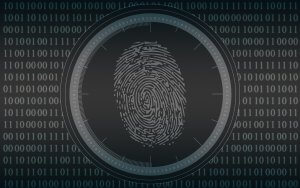Choosing the Right Authentication Methods for Mobile App Security
April 8, 2025 - 57 minutes readAfter reading this article, you’ll:
- Understand how to balance security and user experience by implementing a layered authentication approach that combines multiple methods (like biometrics, MFA, and social logins) to address various security vulnerabilities while minimizing friction for legitimate users.
- Gain knowledge about emerging passwordless authentication technologies like passkeys (FIDO2/WebAuthn), their significant security advantages over traditional passwords, and how implementing them now can future-proof their mobile apps against phishing and credential theft.
- Comprehend the specific strengths and weaknesses of different authentication methods—from traditional passwords to biometrics, multi-factor authentication, OAuth social logins, and emerging decentralized identity solutions—enabling them to select the optimal combination for their app’s risk profile, user base, and compliance requirements.

Mobile apps have become integral to how businesses engage with customers, manage data, and deliver services. With this ubiquity comes a mounting responsibility to secure these apps against unauthorized access. Strong authentication is the frontline defense to prevent breaches, fraud, and data leaks. In fact, 81% of confirmed breaches in 2022 were traced back to weak, reused, or stolen passwords. For business leaders, choosing the right authentication methods means balancing robust security with a seamless user experience. This article explores various mobile app authentication options – from passwords and biometrics to emerging solutions like passkeys and decentralized identity – and offers insights on their pros, cons, and best use cases.
Why Strong Mobile Authentication Matters
Mobile apps often handle sensitive customer information (financial records, personal health data, etc.), making them prime targets for attackers. A compromised app account can lead to identity theft, fraud, or regulatory penalties for the business. Unfortunately, 30% of internet users have already experienced a data breach due to a weak password. Attackers frequently exploit human error and poor login practices – reused passwords, failure to enable multi-factor authentication, or falling for phishing prompts.
Beyond direct breaches, poor authentication undermines user trust. If your app’s security is perceived as lax, users (and regulators) may lose confidence. This is especially true in high-stakes industries like healthcare and finance. For example, HIPAA regulations for healthcare apps mandate safeguards such as unique user authentication and automatic logoff to protect patient data. Financial services face similar requirements under laws like the Bank Secrecy Act, emphasizing strong customer authentication and encryption. In short, getting authentication right is not just an IT concern – it’s a business imperative to protect your customers, comply with laws, and safeguard your brand’s reputation.
Authentication Methods for Mobile Apps
Modern mobile apps can draw from a toolkit of authentication methods. The right choice depends on your app’s user base, risk profile, and usability requirements. Often, a combination of methods yields the best outcome. Below, we break down the most common and emerging options, with their advantages, drawbacks, and impact on user experience.
Passwords: The Traditional Standard
Passwords remain the most common authentication method. Users create a secret (ideally known only to them) to log in. While simple in concept and implementation, password-only security has well-documented weaknesses:
Security Challenges
Users often choose weak passwords or reuse them across services. This makes accounts vulnerable to guessing, credential stuffing, and other attacks. It’s estimated that 81% of hacking-related breaches leverage stolen or weak passwords. A single compromised password can unlock multiple accounts if reused.
User Experience
Remembering complex passwords for every app is cumbersome. Password rules (uppercase, symbols, etc.) and periodic reset policies can frustrate users, sometimes leading to “security fatigue.” Frequent resets or lockouts might drive users away or increase support costs.
Pros
Despite its flaws, password auth is familiar to everyone. It doesn’t require special hardware or secondary devices. Implementation is straightforward, and users can choose credentials they’re comfortable with. For low-risk apps or initial mobile app development MVPs, passwords offer a quick start.
Cons
Weak security if used alone. Handling passwords securely (proper hashing, salting, rate-limiting login attempts) adds backend complexity. Usability issues (forgotten passwords, resets) are common. Given modern threats, relying on passwords alone is not recommended for any app handling sensitive data.
Best Practice: If you use passwords, enforce strong password policies and always store them encrypted. Encourage or require additional factors (covered next). Provide user-friendly tools like “show password” toggles and password managers integration to alleviate user burden. Importantly, monitor for breached credentials (services that detect if a user’s password was exposed in a breach) so you can prompt resets when needed.
Multi-Factor Authentication (MFA)
Multi-factor authentication requires users to present a second (or even third) piece of evidence in addition to a password. This second factor could be something the user has (a phone for a one-time code or push notification), is (biometric trait), or does (behavioral pattern). MFA dramatically improves account security by making it far harder for an attacker to gain access. Even if a password is stolen, the attacker cannot log in without the other factor.
Security Benefits
When implemented correctly, MFA blocks 99.9% of automated cyberattacks according to Microsoft. A password alone might be guessed or phished, but guessing a password and stealing a one-time code or biometric is exponentially more difficult. Simply adding a recovery phone number (for SMS codes) to accounts helped cut account hijack incidents. In practice, MFA stops the vast majority of bulk credential-stuffing and phishing attacks that plague businesses.
Methods
Common MFA methods in mobile apps include one-time passcodes (OTP) sent via SMS or email, codes generated by authenticator apps (e.g., Google Authenticator, Authy), push notification approvals (tap “Allow” on your phone to verify login), or hardware security keys. Each has pros/cons – SMS is user-friendly but can be intercepted by SIM-swapping; app-based codes and push notifications are more secure; physical security keys or passkeys (discussed later) offer the strongest protection (phishing-resistant) but require users to have compatible devices.
User Experience
The main tradeoff is convenience. Any extra step at login can cause friction. Studies show about 1 in 3 consumers avoid using MFA because they find it annoying. Businesses must navigate this carefully: mandating MFA for a banking or healthcare app makes sense (users will accept it for security), but forcing MFA on a casual gaming app could deter sign-ups. One approach is to make MFA optional but encouraged for general users, and mandatory for high-risk actions (like changing account settings or performing financial transactions).
Adoption Trends
Enterprises have widely embraced MFA for workforce logins (e.g., 87% of companies with over 10,000 employees use MFA. However, smaller businesses and consumer apps lag behind – nearly 65% of global SMBs do not use any MFA, often citing cost or complexity. This gap represents a security risk and an opportunity: offering MFA can be a competitive advantage, signaling that you take security seriously. Moreover, the technology has matured; mobile platforms provide built-in MFA frameworks (like Firebase Authentication or AWS Cognito MFA features) that lower implementation barriers.
Pros
Tremendous security boost with relatively low cost. Protects against phishing and stolen passwords. Many users are now familiar with receiving a text code or authenticator prompt. Can be made more user-friendly with features like “remember this device” to reduce frequent prompts.
Cons
Adds an extra step for users, which may reduce conversion or engagement if not managed well. SMS-based MFA can introduce small costs and isn’t foolproof (SMS can be delayed or hijacked). Backup and recovery flows are needed (e.g., if a user loses their phone, how else can they log in?). Poorly implemented MFA can frustrate users (e.g., codes that expire too quickly or require typing long strings).
Best Practice
Offer MFA, at least as an opt-in, for your mobile app accounts. Use the most secure methods feasible – authenticator apps or push notifications are preferable over SMS when possible (SMS should be a fallback). Clearly communicate the benefits to users (“Protect your account with an extra layer of security”) to encourage adoption. Also, leverage device features: for example, on iOS and Android, OTP codes received via SMS can be auto-filled, reducing friction. By thoughtfully integrating MFA, you significantly lower the risk of account takeovers without heavily sacrificing user experience.
Biometric Authentication (Fingerprint & Face ID)
 Biometric authentication uses an individual’s unique physical traits to verify identity – typically fingerprints or facial recognition on mobile devices. Modern smartphones come equipped with fingerprint scanners or front cameras and sensors that enable Face ID or similar technologies. Biometric login has quickly grown popular in mobile apps (especially banking and payment apps) because it’s both secure and convenient for users. As of 2022, 81% of smartphones have biometrics enabled, meaning the vast majority of users can leverage their fingerprint or face to unlock apps.
Biometric authentication uses an individual’s unique physical traits to verify identity – typically fingerprints or facial recognition on mobile devices. Modern smartphones come equipped with fingerprint scanners or front cameras and sensors that enable Face ID or similar technologies. Biometric login has quickly grown popular in mobile apps (especially banking and payment apps) because it’s both secure and convenient for users. As of 2022, 81% of smartphones have biometrics enabled, meaning the vast majority of users can leverage their fingerprint or face to unlock apps.
How it works
In a mobile app, biometrics are usually implemented via the device’s secure hardware. For example, iOS and Android provide APIs (like Apple’s Local Authentication or Android’s BiometricPrompt) that let the app ask the OS to authenticate the user via a stored fingerprint/face data. Upon success, the app can log the user in without a password. Importantly, the fingerprint or face data never leaves the device – the app just gets a “yes/no” from the OS. This design preserves privacy while adding security.
Pros
Biometrics offer a frictionless login experience. Users simply touch the sensor or glance at the phone – no password to type or code to input. This speed and ease often lead to higher user engagement and satisfaction. Security is strong: biological traits are hard to fake or share. A thief might steal someone’s password, but they can’t easily steal a fingerprint. Biometric checks are also resilient against phishing (you can’t “trick” someone into giving their fingerprint in an email). Additionally, biometrics can serve as a form of two-factor authentication: for instance, a user might enter a password and provide a fingerprint, which fulfills two factors (something you know + something you are) for high-security apps.
Cons
No authentication method is perfect. Not all users can or want to use biometrics – some may have privacy concerns or physical difficulties (e.g., worn fingerprints, or a face that doesn’t consistently register). Environmental factors can interfere (wet fingers won’t unlock a fingerprint reader, face scanners may struggle with masks or poor lighting). There’s also the matter of backups: every biometric system must fall back to a PIN or password if the biometric fails. This means you still need a traditional method as a safety net, and that password could be targeted if the biometric can’t be used.
Moreover, while rare, biometrics can be spoofed; advanced attacks have used high-resolution photos or masks to fool facial recognition, though consumer devices have added liveness detection to mitigate this. Finally, biometric data is highly personal – if a fingerprint template were compromised (through a software flaw), the user can’t “change” their fingerprint like a password. This makes secure handling crucial (thankfully, mobile OS vendors design these systems with encryption and enclave protections).
User Experience
Generally excellent. Once users enroll their biometrics on the device, using it in your app can often be as simple as a pop-up that says “Log in with Fingerprint” and a quick scan. This merges security with convenience – a rare win-win. For business apps, biometric login often reduces login friction dramatically. For example, banking apps report a significant reduction in login time and an increase in usage after adding fingerprint/face login options.
It’s important, however, to educate users during onboarding about enabling biometric login (and reassure them that their fingerprint isn’t being sent to your servers). Clear messaging like “Use your fingerprint stored on your phone for quick, secure access – we never see or store your fingerprint data” helps build trust.
Best Practice
If your app handles sensitive data or will be used frequently, enable biometric authentication as an option. During signup or first login, prompt the user: “Do you want to enable fingerprint/Face ID login for faster access?” Many will appreciate this. Always require at least one alternative method (password or PIN) as a backup. Also, stay updated on platform guidelines – for example, Apple requires apps using Face ID to provide a fallback and to use the official API (so the system shows the familiar Face ID prompt).
In terms of security, rely on the platform protections (don’t try to roll out your own biometric storage). Biometrics, when combined with good overall app security, significantly enhance protection with minimal user inconvenience, striking an excellent balance of security and convenience.
OAuth2 and Social Logins (Third-Party Identity Providers)
 Instead of having users create a brand-new username and password for your app, you can let them log in with an existing account from a trusted provider such as Google, Apple, Facebook, or LinkedIn. This is facilitated by OAuth2 and OpenID Connect protocols under the hood, but to the user it’s just “Log in with Google” or “Sign in with Apple.” Using social or third-party logins has become a popular authentication method in mobile and web apps because it streamlines onboarding and leverages providers that many users already trust.
Instead of having users create a brand-new username and password for your app, you can let them log in with an existing account from a trusted provider such as Google, Apple, Facebook, or LinkedIn. This is facilitated by OAuth2 and OpenID Connect protocols under the hood, but to the user it’s just “Log in with Google” or “Sign in with Apple.” Using social or third-party logins has become a popular authentication method in mobile and web apps because it streamlines onboarding and leverages providers that many users already trust.
Pros (Security)
By outsourcing authentication to big providers, you inherit some of their security. Providers like Google, Apple, and Microsoft invest heavily in account security, fraud detection, and fintech security measures. For instance, if a user logs in with Google, and Google has already verified that user with MFA or device-based login, your app benefits from that without implementing it yourself. You also don’t have to store a password for that user in your database, reducing the risk if your systems are breached (there’s no password to steal for those accounts). Additionally, social logins can provide verified email addresses or profile info (with user consent), making account setup quicker and possibly more reliable (e.g., fewer fake emails).
Pros (User Experience)
Social login can significantly reduce sign-up friction and increase registrations. One study found 86% of people are bothered by having to create new accounts on websites. Think about it – every extra field or step in registration is an opportunity for the user to give up. With social login, new users can sign up for your app with one or two taps, using credentials they already remember and use elsewhere.
Future logins are fast (often one tap if they’re already logged in to the provider on their phone). This convenience can boost conversion: some services have reported a 20-40% improvement in sign-up rates after adding social login options. It’s especially powerful on mobile where typing is slower – “Sign in with Apple” on iOS, for example, allows a user to create an account using their Face ID and Apple ID in seconds.
Cons
Relying on third-party identity has its drawbacks. You’re subject to the third-party’s availability and policies – if Facebook is down or the user’s account is locked, they can’t log in to your app either. Some users are also wary of social logins, either for privacy reasons (concerned you or the provider will share more data behind the scenes) or simply because they don’t have an account with the offered providers. There’s also a small percentage of users who prefer not to “tie” their accounts together. Implementation-wise, OAuth2 can be tricky, but there are many libraries and SDKs to ease this (and providers like Google/Apple have good documentation).
Considerations
If you offer social login, it’s often wise to offer a traditional email/password route as well for those who don’t want to use it. However, you might choose to go passwordless entirely (for example, some apps only allow sign-in via Google or Apple to simplify support and security). Know your audience: if your app is targeting enterprise users, “Sign in with Microsoft Azure AD” or SAML SSO integration might be more relevant than Facebook.
If targeting general consumers, the big three (Apple, Google, Facebook) cover a large portion of the market. On iOS, Sign in with Apple deserves special mention: Apple now requires apps that use other social logins to also offer Apple’s login option. Apple’s login can even create a throwaway relay email for privacy-conscious users. It’s a smooth experience on iPhones/iPads, leveraging Face ID/Touch ID, and is worth including for iOS apps.
Best Practice
Provide social login options to complement your standard login. Emphasize those options at sign-up (“Save time – use an existing account”). Ensure you request only the minimum necessary permissions from the provider to avoid scaring users (e.g., just request basic profile/email, not their entire friend list or post permission, unless your app truly needs it). Make account linking and recovery straightforward – for instance, allow a user who signed up with Facebook to later add an email/password to their account, or vice versa, so they have flexibility.
Monitor the authentication success rates: if many users are choosing social login and sailing through, it’s a good sign your user experience is improved. Overall, social/OAuth logins can offload much of the authentication hassle and enhance security via proven third-party systems, all while reducing friction for your users.
Passkeys and Passwordless Authentication (FIDO2/WebAuthn)
The newest shift in authentication is towards passwordless methods – eliminating the traditional password entirely in favor of cryptographic keys. Passkeys are an implementation of passwordless auth championed by the FIDO Alliance and supported by major tech companies. In essence, a passkey is a cryptographic key pair used for login: the private key is stored on the user’s device (and protected by device security like biometrics or PIN), and the public key resides with the service. When logging in, the device proves possession of the private key (often unlocked via fingerprint or face), and the server verifies via the public key. No password needed, and therefore nothing that can be leaked or phished in the traditional sense.
Major platforms – Apple, Google, Microsoft – have all rolled out support for passkeys over the last couple of years, making it a timely consideration for mobile app developers. For example, an iPhone user can create a passkey for your app’s service which is stored in their iCloud Keychain; later, logging in might be as simple as Face ID verification, with the cryptographic exchange happening behind the scenes.
Security Advantages
Passkeys are inherently resistant to phishing and database breaches. There’s no shared secret (password) that a hacker can trick the user into giving up or steal from your servers – the private key never leaves the user’s device. Even if an attacker dupes someone with a fake login page, without the actual device and biometric, the passkey won’t authenticate. This represents a huge leap in mitigating credential theft. Dashlane, a password manager company, reported that use of passkeys is skyrocketing – they saw a 400% increase in passkey authentications in early 2024, with 1 in 5 of their active users now having at least one passkey in their vault.
As adoption grows, we are seeing real-world validation that the technology works at scale. Google announced in mid-2024 that passkeys had been used over 1 billion times by 400 million accounts, reflecting usage across its ecosystem. This suggests that when offered, users do try it and often stick with it due to ease.
User Experience
The ideal passwordless UX is extremely smooth – imagine opening your app, tapping “Log in with passkey,” and simply scanning your fingerprint. No typing at all. In practice, we’re getting close to that ideal. Both iOS and Android now offer UI prompts for passkeys that feel very much like using Face ID or Touch ID for Apple Pay. It’s intuitive, especially for users who are already using biometrics to unlock their phone.
Another benefit is fewer failed login attempts and lockouts – Dashlane’s data indicated passkeys increased successful sign-in rates by 70% compared to passwords (people aren’t fat-fingering passwords or forgetting them). That said, there is a learning curve since passwordless login is new to many. Users might not understand what a passkey is on first encounter. It’s important to guide them (e.g., “We now support Passkeys – a secure, one-tap login. No password required!”) and possibly offer it alongside existing methods initially.
Challenges
While promising, passkeys aren’t yet ubiquitous. Not every service supports them and not every user has set them up. There may be cross-platform concerns: a passkey made on an iPhone syncs via iCloud to the user’s other Apple devices, but if the same user wants to log in on a Windows laptop, it requires a slightly different flow (scanning a QR code with the phone, for instance). These edge cases are being worked out, but they mean you’ll likely need to keep alternate login methods (like email login links or even old passwords) as a fallback during the transition period.
Implementation for developers is improving with libraries and platform support, but it does require integrating the WebAuthn standard – a bit more complex than a basic password check. Another consideration is account recovery: if a user loses all their devices that had the passkey (and hasn’t saved a backup), how do they regain access? You may need a recovery process, which could be as simple as reverting to email verification or as involved as support intervention. Designing a secure yet user-friendly recovery flow is part of passwordless strategy.
Adoption Outlook
The trend is clearly moving toward passwordless. Big brands are endorsing it – e.g., PayPal, eBay, and many banks have started offering passkeys. Industry data shows a steady uptick in support: by late 2024, 20% of the world’s top 100 websites now support passkeys, and more plan to. Many businesses are in a phase of offering it as an optional login method to test the waters. This is a sensible approach: introduce passkeys for those who want a modern experience, but don’t force everyone to switch until it’s more universally understood.
Best Practice
Stay ahead of the curve by implementing passkey support in your mobile app when feasible. You can use libraries or services (like Firebase Authentication, Auth0, or AWS Cognito) that have started integrating FIDO2 support. Offer it as “Passwordless Login” or “Sign in with a passkey” alongside your existing options. Educate users about its benefits (secure and easy) and perhaps incentivize its use for those who try it (for instance, “Enable passkey login and get a one-time bonus” in a fintech or reward app, to encourage adoption).
Always retain a fallback for now (such as an email-based login link if the user loses their device). By embracing passkeys, you signal that your company is forward-thinking on security and you reduce long-term password management headaches. As the ecosystem matures, passwordless could substantially reduce phishing and fraud incidents affecting your user accounts.
Decentralized Identity (Future Outlook)
Looking a bit further on the horizon, decentralized identity systems are emerging as a potential game-changer for authentication and user identity management. Unlike traditional identity models (where each app or service holds its own user credentials in a siloed database), decentralized identity puts users in control of their credentials, often leveraging blockchain or distributed ledger technology and digital wallets. Concepts like self-sovereign identity (SSI) and decentralized identifiers (DIDs) allow a person to have a portable, cryptographically secure identity that they can use to log in or prove attributes to any service, without a central authority verifying each time.
In practical terms, a decentralized identity solution might involve a user storing verified credentials (say, a government-issued ID or a proof of their email ownership) in a digital wallet app. When registering or logging in to a new service, instead of creating a new account from scratch, the user could consent to share just the necessary information from their wallet. For instance, to prove age to a wine delivery app, the user could share a credential from their digital driver’s license that simply says “over 21” without revealing their birthdate or license number. This kind of selective disclosure is powerful for privacy. From the business’s perspective, you get a high-assurance authentication (maybe even government-verified) without storing a pile of personal data on your servers. Businesses no longer have to choose between security and user experience – a decentralized approach can deliver both. It also reduces the honeypot of sensitive data you hold, potentially shrinking your compliance burden and risk; a breach of your system might yield far less personal data since user identities live with the users.
Pros
Decentralized identity promises greater security, privacy, and user autonomy. Users have one identity they manage, and they share it on their terms – this can eliminate the need for dozens of separate passwords or accounts, reducing the overall attack surface (less password reuse, fewer databases with personal info to hack). For organizations, it could mean not having to handle password resets or identity verification questions – those are handled by the identity providers/issuers in the ecosystem. Moreover, verifying user attributes (like certifications, age, citizenship, credit score, etc.) can be more trustworthy if they come as cryptographically signed credentials from reputable issuers, rather than self-asserted by the user on a form.
This could be transformative for sectors like finance or hiring, where trust and verification are crucial. Another benefit is compliance: privacy laws (GDPR, CCPA and others) are making it harder to justify storing large amounts of user data. Decentralized identity flips the model – the user stores their data and just permissions access temporarily – which could simplify compliance since you as a business store much less. Finally, it provides inclusivity in a global sense; users who don’t have traditional IDs might still generate reputation or credentials in decentralized systems that allow them to access services.
Cons
The technology and standards (like DID, Verifiable Credentials) are still maturing. There’s a lack of widespread user-friendly tooling at present. Asking a typical user to manage a cryptographic wallet could be a big ask – it needs to become seamless in the way that, say, using Apple Wallet for a boarding pass is today. There’s also the chicken-and-egg problem: services might be hesitant to support decentralized identity if few users use it, and users won’t carry around digital credentials if few services accept them.
This is changing slowly as big players like Microsoft, IBM, and government initiatives explore the space, but for now it’s mostly pilot programs and specific niches (e.g., some universities issue digital diplomas, some states issue mobile driver’s licenses, etc.). Another challenge is loss and recovery: if a user loses their identity wallet (and hasn’t backed it up), how do they recover their identity? Solutions exist (social recovery, custodial wallets), but it adds complexity. Also, from a business standpoint, supporting decentralized identity might require integrating new protocols and educating your user base on a novel login method – which could be a heavy lift if the value isn’t immediately clear.
Current State
As of 2025, decentralized identity is on the radar but not commonly used for average mobile app logins. You might encounter it in specific contexts (for example, a blockchain app using an identity wallet, or a government app offering “login with your digital ID”). Standards bodies and alliances (like the Decentralized Identity Foundation and W3C) are refining how DIDs and credentials work interoperably. Some tech companies offer SDKs for handling digital credentials. It’s a space worth watching, especially if your business deals with highly sensitive identity verification or could benefit from cross-platform trust (imagine not having to do KYC from scratch if a user can present a verifiable credential that they are KYC-verified by a trusted entity).
Best Practice
For most businesses, fully adopting decentralized identity is not a pressing need yet. However, you should remain informed and open to pilot opportunities. If your app could benefit from secure identity verification (say, a healthcare app verifying medical licenses, or a fintech app verifying customer identity for compliance), consider exploring partnerships or frameworks that issue and accept verifiable credentials. Even if you don’t implement a decentralized system now, design your data practices with the principle of minimization – only collect and store what you absolutely need.
That aligns well with the philosophy of decentralized identity and will make any future integration easier. In the coming years, if standards solidify and user-friendly identity wallets become common (perhaps baked into smartphones), businesses that are ready to integrate with them will have an edge in offering a truly seamless and secure onboarding. Decentralized identity represents a future where users can bring their own trusted identity and businesses don’t have to be the sole guardians of sensitive personal data – a win-win scenario once the kinks are worked out.
Balancing Security, Convenience, and Business Needs
With the array of authentication options described, a natural question arises: Which methods should my business choose for our mobile app? The answer will depend on your specific context, but the guiding principle is to balance security with user convenience, aligned with the risks inherent in your app’s function. Here are some key considerations to help shape your authentication strategy:
Assess Your Risk Profile
Apps that handle financial transactions, sensitive personal data, or critical business functions demand stronger authentication by default. If you’re building a mobile banking app or a telehealth healthcare app, assume that malicious attempts will be high and that regulatory scrutiny is tight – MFA and biometrics may be non-negotiable requirements. Conversely, if your app is a low-risk utility or a social media tool, you might prioritize ease of access, but still offer added security as an option for power users.
Know Your Users
Tailor methods to what your target audience will tolerate and adopt. A tech-savvy user base might welcome passkeys and authenticator apps, whereas an older or less technical audience might prefer familiar methods like passwords or phone-based OTPs. It’s often wise to provide a couple of choices (for example, password or social login to sign up; then password or biometric each time to log in). Giving users some control can improve their comfort while still nudging them toward safer practices. Monitor usage analytics – if you see, say, a high drop-off at account creation, consider simplifying with social login or magic links.
Combine Methods for Layered Security: You don’t have to pick just one. A common robust setup is password + MFA, which addresses the weaknesses of passwords. Many successful apps now marry security and convenience by combining approaches: for instance, a user logs in with a biometric (convenient) that unlocks a stored passkey (secure), or they use OAuth social login (convenient) but the first time from a new device they must enter a code from email (adding security for that scenario). Think in terms of layers: something like device recognition can run in the background (identifying if this is a known device or location) and only if something is off do you challenge the user with extra authentication. This adaptive approach gives most users a smooth ride but still guards against suspicious behavior.
Plan for the Worst (Gracefully)
Robust authentication includes planning for when things go wrong. What if a user loses access to their factor (lost phone with authenticator, forgotten password, etc.)? Account recovery flows must be secure (to prevent an attacker exploiting them) but also not overly arduous (or users will create workarounds). Common solutions include backup codes, backup email or phone, or identity verification via customer support as a last resort. Whatever you choose, document it clearly in your user-facing help. A smooth recovery process can be a lifesaver in retaining users who would otherwise churn after a lockout.
Stay Updated on Threats
Mobile security threats evolve. For instance, SIM swap attacks (where attackers take over a victim’s phone number) have made SMS 2FA less trustworthy in some cases; malware on Android can sometimes steal OTP codes if the device is compromised. Be aware of current trends – e.g., if there’s a surge in phishing targeting your industry, maybe put out an advisory to users about safeguarding their accounts or implement more phishing-resistant options like push-based MFA or passkeys. Regularly review reports like Verizon’s Data Breach Investigations Report or cybersecurity firm analyses to see how attackers are breaching accounts, and adjust your defenses accordingly.
Compliance and Legal Requirements
Ensure you meet any industry-specific authentication requirements. For example, European financial services must adhere to PSD2’s Strong Customer Authentication rules, which generally require two independent factors for transactions. Failing to implement required controls could not only lead to breaches but also fines or legal challenges. On the flip side, meeting high standards can be a selling point – for instance, emphasizing that your app is HIPAA-compliant or follows NIST digital identity guidelines can build customer trust in sectors where that matters.
Performance and Reliability
Authentication shouldn’t significantly degrade app performance. Optimize network calls involved in login (e.g., keep token sizes reasonable, use reliable SMS gateways if sending OTPs, etc.). Also consider offline scenarios: if your app can be used offline for a period, can users still authenticate (perhaps using a device PIN fallback)? Make sure any third-party services (SMS, OAuth providers) have high uptime or an offline alternative. A user who cannot log in when they need to (due to an auth service outage) is a frustrated user.
Work with Experienced Developers
Implementing secure authentication is complex. Mistakes (like improper token storage, poor session handling, inadequate server verification) can undermine even the strongest method. It’s wise to involve security experts or use well-vetted frameworks. Many businesses partner with experienced mobile app development firms that have built secure auth flows before. These experts can help integrate the right combination of methods and ensure things like encryption of tokens, secure API communication, and compliance considerations are all handled correctly.
Recommendations and Best Practices
To wrap up, here are actionable best practices and recommendations for business leaders aiming to fortify their mobile app’s authentication:
- Adopt MFA Early: If your app has user accounts, provide multi-factor authentication from the start. Even if it’s optional, a segment of your users will use it, immediately raising the security bar. Emphasize usage of authenticator apps or system push notifications which are safer and more user-friendly than SMS. Consider making MFA mandatory for administrative users or those with access to particularly sensitive functions within the app.
- Leverage Built-in Device Security: Users are already locking their phones with PINs, fingerprints, and Face ID. Tap into that. Implement fingerprint/face login for your app to make it effortless for users to log in securely. This reduces reliance on passwords (which they might otherwise weaken for convenience). As noted, the majority of smartphones can support this – it’s low-hanging fruit for both security and UX improvement.
- Offer Social/Single Sign-On: Don’t make users juggle yet another password if you can avoid it. By offering “Sign in with Google/Apple/etc.”, you not only simplify their experience but also outsource much of the security heavy lifting to companies who excel at it. This can particularly help increase sign-ups and conversions, as users breeze through onboarding. Just ensure you have a solution for users who prefer not to use those options (e.g., an email-based login or an enterprise SSO integration if targeting businesses).
- Keep an Eye on Passwordless Tech: Start experimenting with passkeys or token-based login if you have the resources. This could set you apart as a leader in security innovation. Even a limited beta for passwordless login with a subset of users can yield insights. Prepare your infrastructure to be flexible with auth methods. The transition away from passwords will likely accelerate in the next few years – being prepared to adapt will save you reactive scramble later.
- Educate and Encourage Users: Authentication is one area where user behavior matters a lot. Provide in-app prompts or tips about security features (“We support login alerts – enable them to be notified of suspicious activity” or “Add a recovery phone now to easily reset your password if you ever lose access”). You can also use emails or blog posts (as part of customer education) about new authentication features or why enabling MFA is important. Many users follow the path of least resistance, so making the secure path also the easy and clearly communicated one is key.
- Protect Authentication Data on the Device: Often overlooked, but if your mobile app caches login credentials or tokens, protect them. Use the device keystore/keychain for storing sensitive tokens or keys. Ensure any biometric authentication in the app uses the official APIs (which leverage secure hardware enclaves). Implement session timeouts or auto-logoff for especially sensitive apps (for example, a banking app might log the user out after a few minutes of inactivity as an added precaution, or mask sensitive data until re-authenticated).
- Test, Test, Test: Regularly perform security testing on your authentication mechanisms. This includes penetration testing (can an expert break in or bypass your login?), and user acceptance testing (are users finding the login process smooth or burdensome?). Simulate scenarios: How does your auth hold up against a phishing attempt? What if someone tries thousands of passwords (do you lock out appropriately)? By testing, you can find the right thresholds and fix weaknesses before real attackers or frustrated users find them.
- Stay Compliant and Documented: Keep documentation of what authentication methods you use and why. This is helpful not just for internal clarity but also if clients or auditors ask. If you’re in an industry like fintech or healthcare, you may need to demonstrate compliance with security frameworks. Having a clear authentication policy (e.g., “All user passwords are hashed with bcrypt, MFA is required for transactions above $X, our app uses OAuth 2.0 implicit flow for login with SSO,” etc.) shows due diligence. It also makes onboarding new developers or partners easier since they can ramp up on your auth system quickly.
- Plan for Scale: As your user base grows, so will authentication events. Ensure your infrastructure (servers for login, SMS providers, etc.) can scale without bottlenecks. Nothing sours a new user’s first impression like an auth system that’s slow or frequently down. Leverage cloud services that auto-scale if possible. Also, design rate limits and alerts – if you suddenly see a spike in failed logins or OTP requests, that could be an attack in progress; your system should handle it gracefully (rate-limit to protect and alert your security team).
Choosing the right authentication methods for your mobile app is a critical decision that can affect user adoption, security outcomes, and your organization’s reputation. By understanding the landscape of options – from the old stalwart of passwords to cutting-edge passkeys and beyond – you can make informed decisions that suit your business needs. In many cases, a multi-layered approach works best: combine methods to cover each other’s weaknesses and to offer users flexibility. For example, you might use OAuth social login for ease, but back it up with device biometrics for quick re-entry to the app, and require MFA for high-value actions. Always center the strategy on both security (to keep threats out) and usability (to let legitimate users in with minimal friction).
Robust mobile app authentication is an investment in your product’s trust and longevity. Breaches and attacks will continue to threaten, but with the right protections in place – and by staying proactive about new authentication advancements – you can significantly reduce your risk. Business leaders who prioritize secure authentication not only shield their companies from immediate harm but also build a foundation of trust with their user base, which is invaluable. As you evaluate or build your mobile app, take the time to get authentication right. It’s the gatekeeper to all your app’s value, and it’s worth the effort to make that gate both iron-clad against intruders and effortlessly open for your rightful users.
By following these guidelines and continually adapting to the evolving security landscape, you’ll position your mobile app to be both secure and user-friendly, a combination that is essential for success in today’s digital business environment. Your users – and your future self – will thank you for the foresight and diligence in choosing the right authentication methods from the start.
Frequently Asked Questions (FAQ)
Q1: Why is password authentication alone not sufficient for mobile apps?
A1: Passwords can be weak, reused, or easily stolen, accounting for over 80% of breaches. Relying solely on passwords significantly increases the risk of unauthorized access.
Q2: What are the main advantages of biometric authentication?
A2: Biometrics (fingerprints, facial recognition) are convenient, secure, and resistant to common attacks like phishing. They significantly enhance user experience by providing quick and effortless access.
Q3: How does Multi-Factor Authentication improve security?
A3: MFA adds an additional verification layer (e.g., one-time passcode, push notification), blocking approximately 99.9% of automated attacks and drastically reducing breach risks.
Q4: Are social logins (OAuth2) secure and reliable?
A4: Yes, when using trusted providers (Google, Apple, Facebook), social logins enhance security by delegating identity management to platforms with robust security measures. However, offering alternative login methods ensures accessibility for all users.
Q5: What are passkeys, and why are they becoming popular?
A5: Passkeys are a passwordless, cryptographic authentication method stored securely on user devices, eliminating traditional password weaknesses and providing strong phishing resistance. Their convenience and security benefits are rapidly driving adoption.
Q6: Should my business adopt decentralized identity methods now?
A6: Decentralized identity solutions offer promising long-term benefits but are currently in early adoption stages. Businesses should monitor developments and consider pilot programs if they handle particularly sensitive data requiring high security.









